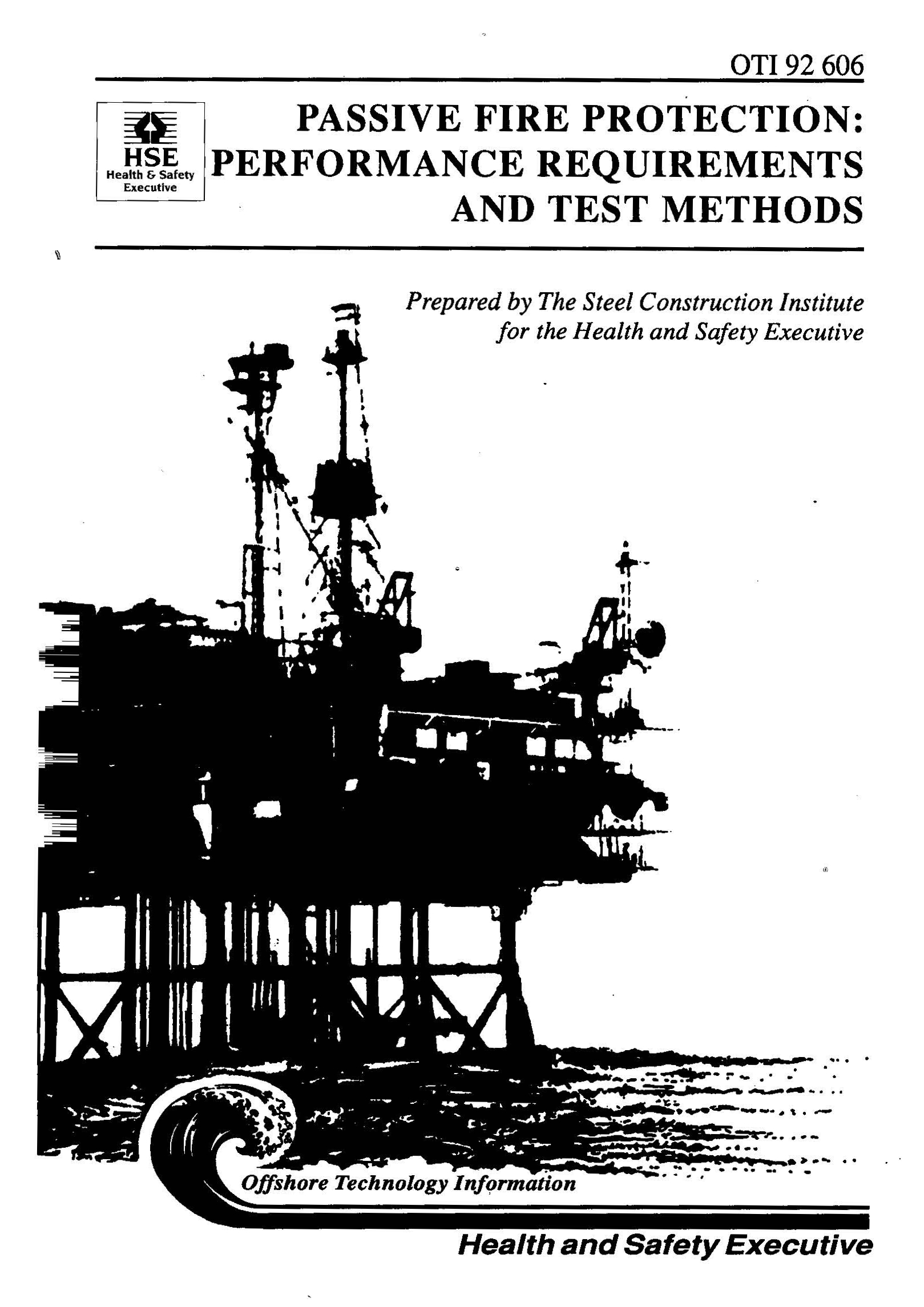HSE OTI 92 606
Passive fire protection: Performance requirements and test methods
Work Package FR3
BFETS Phase 1

FABIG Members: Log-in to access all FABIG resources LOG IN
SUMMARY
This report appraises the performance requirements for offshore passive fire protective systems and assesses the adequacy of current tests for ensuring that performance. It considers the many aspects related to installation, durability under service conditions in the pre-fire phase, exposure to fire conditions likely to be experienced offshore, and the effects of explosions.
The objective of setting and assessing performance requirements for any system is to establish fitness for purpose.
The purpose of passive fire protective materials and systems is to delay or limit the effects of fire on structural and segregating elements or vital equipment. Therefore, to establish their fitness, it is necessary:
- To determine how the material or system performs when exposed to fire, and
- To be able to predict that the material or system will be in position, in a suitable state, throughout its projected lifetime.
NEITHER IS FULLY SATISFIED BY CURRENT PRACTICE
Demonstration of an ability to meet certain performance criteria in standard fire tests is presently the primary measure of potential fire response. The fire tests are furnace-based and derive from onshore building practice. Meeting these criteria essentially fulfils the current requirements, for approval by regulatory authorities, for the use of passive fire protection offshore. However, the prescribed furnace conditions do not relate via thermal and/or aerodynamic effects to those of "real" fires. Other tests involving direct flame impingement may offer more of the characteristics of "real" fires.
Resistance to blast loadings depends upon the reaction of the substrate; response assessment remains in the experimental stage.
Smoke and toxic gas emissions from passive fire protective materials are currently considered in isolation and there is uncertainty about the overall life-threat significance of these emissions compared with those from the primary fire. Potential benefits may be lost by restricting the use of certain products.
Information on installing passive fire protection products is basically good but quality principles are not always followed during application. Likewise, once installed, maintenance is not always given sufficient attention to avert undue deterioration.
Where there is an absence of field experience for a given product, its long-term durability is uncertain. Only a very limited ability to predict future performance is provided by existing, accelerated weathering procedures. This inhibits the early introduction of new and improved systems.
The full report is publicly available from the HSE Website at www.hse.gov.uk/research/otipdf/oti92606.pdf.
Online purchase options:
Non-Members of FABIG are able to purchase PDF copies of the reports.